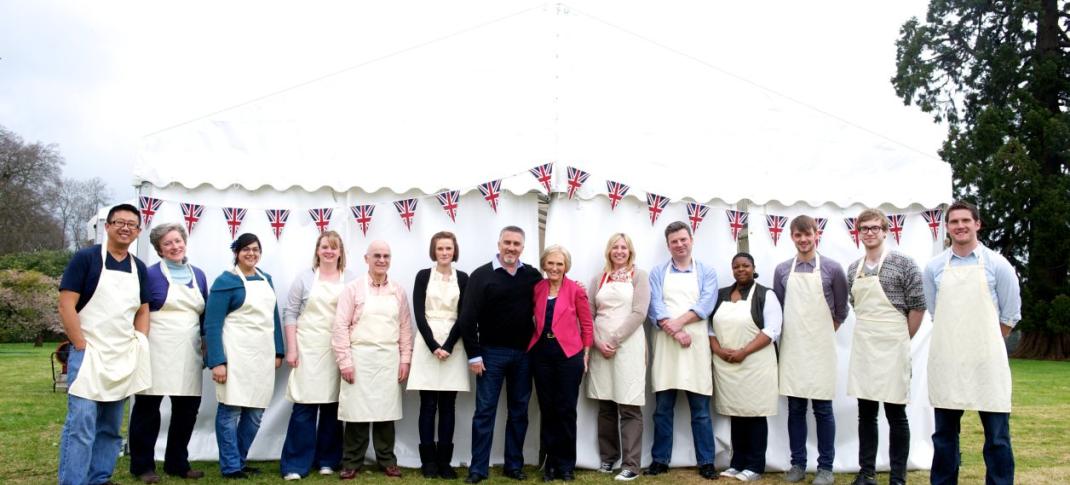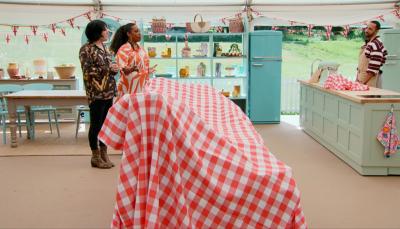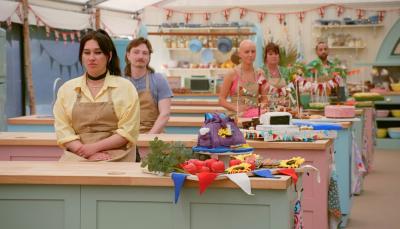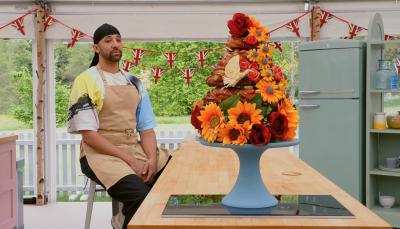Know Your GBBS History: Cakes & Bread Week

Our new series runs down the truth behind the popular bakes featured on The Great British Baking Show. This week: Cakes and Bread!
Cake Week
Upside Down Cake
The name is a creation of the later Victorian era, but the cake itself is far older, known as a "Skillet cake," which dates back to the Middle Ages. (With ovens not a household feature for centuries, most women at that time made everything over fires in cast iron pans.) The earliest versions used whatever seasonal fruits were available, including apples and cherries.
Nowadays, when most people hear the words "Upside-Down Cake," they automatically fill in the word "pineapple." This is the fault of Americans in the 1920s, who began buying canned pineapples, shipped in from the relatively new state of Hawaii by Jim Dole's "Hawaiian Pineapple Company." (Today they are simply known as Dole.) In post-war America, the cake became a staple of 1950s cookbooks, and today is considered something of a "mid-century modern" dessert.
Rum Baba
The proper name for this cake is actually "baba au rhum." As the show points out this is a yeast cake, which makes it a cross between a cake and a bread, and boy is the dough sticky. If the name strikes you as close to what you call your grandmother, that's because it's what it's derived from. The word "baba" means "old woman" or "grandmother" in various Slavic languages. In the 1800s, the French got ahold of it and added dried fruit and soaking the cake in rum.
The original form of the baba was similar to the babka. (Babka is a diminutive of "Baba.") A babka was a taller, cylindrical yeast cake, that looks a little like a pop-over. (Babkas are still baked in Ukraine and Poland. My Polish grandmother made them. Here's a variation on the recipe for chocolate ones, if you want to try them yourselves.)
The "Hidden Design" Cake
The complex work of making a "hidden design" cake was the provenance of professionals only until this decade. The sheer level of maths and planning that went into these sort of cakes was simply written off as "too difficult" for home bakers for many decades. Then in 2010, the website IAmBaker published a book of recipes for hidden design cakes, with easy breakdowns for home bakers to follow, and advice on how to learn to design their own.
By 2012 (when this season of The Great British Baking Show originally aired across the pond), they were at the height of faddish popularity in the UK, which is why the show chose to feature this challenge. The show was still in early seasons then and trying to balance "historical" vs "popular" bakes. In later seasons we've already seen, the show leaves off being quite so "of the moment" trendy for more timeless recipes.
Bread Week
Flatbreads
The oldest style of bread in the history of breadmaking, flatbread literally dates back millennia. There is evidence Neanderthals baked it back 75,000 years ago, that's how old the concept of the flatbread is. Literally every culture has a version of it in their culinary arsenal. Consisting of nothing more than a combination of flour, water, and salt, you don't get more basic than a flatbread.
Which came first, leavened or unleavened, is a bit like asking about chicken and eggs. It doesn't matter, both are older than any civilization currently in existence. In terms of an opening bread challenge, this was Paul demanding to see who among the contestants could do the absolute basics.
Plaited Bread
When people say "plaited bread" most instantly think of the Challah loaf, the most well-known version in the Western world. But there are many variations in Eastern Europe, dating back to the 15th century. In fact, that's most likely where the Jewish culture adopted it from.
The earliest origins of the bread we know today trace back to Slavic traditions like Romania and Russia, who traditionally made these kinds of loaves for special occasions, including Christmas and Easter, though there are Ukrainian versions as well known as Korovai that date back to pagan times, where they worshipped "the magical properties of grain."
(*I know the video is greyed out but press play, it really does work!)
Bagels
And finally: The bagel (or beigel) traces its origin back to the 1600s, in the Jewish enclaves in Poland. The word, which is derived from the Yiddish word "beygal" (bracelet), was originally a food given to women to eat while in childbirth.
The bagel was adopted widely over the next couple of centuries, with bagels becoming a staple of London in the 1800s. Displayed traditionally on wooden dowels, they became an easy and popular way to eat bread on the go for a meal in the industrial era. Bagels came to the states via Jewish migration to New York, which is why it is a food still associated both with New York City and the Jewish tradition today.
Next on GBBS: Tart Week!




